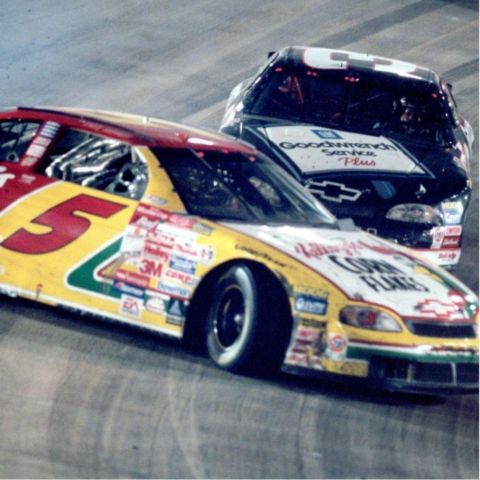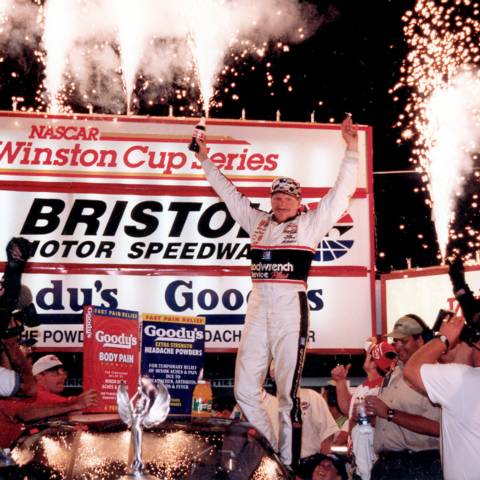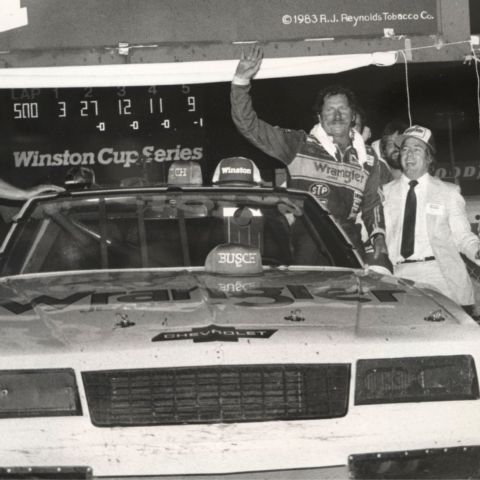Few drivers in NASCAR history mastered Bristol Motor Speedway like Dale Earnhardt Sr. From his first victory in 1979 to his final one twenty years later, he made the half-mile oval his proving ground. Earnhardt didn’t just win at Bristol—he owned it. Here’s a clear look at each of his nine Bristol wins and how he carved his legacy in Thunder Valley.
1. April 1, 1979 – Southeastern 500
Dale Earnhardt’s first Bristol win was also the first Cup Series victory of his career. Driving the No. 2 Osterlund Chevrolet, he started ninth and worked his way to the front with a steady, aggressive pace. He took the lead on lap 139 and never looked back. This race showed everything that made Earnhardt special—calm under pressure, sharp instincts, and a willingness to lean on the car beside him if that’s what it took. He crossed the finish line ahead of Darrell Waltrip and Bobby Allison. It continues to be the only time a rookie won a Cup race at Bristol. That day, fans saw the first flash of what would become The Intimidator.
2. March 30, 1980 – Valleydale Southeastern 500
Just one year later, Earnhardt proved his 1979 win wasn’t luck. Now driving for Rod Osterlund Racing as the defending Cup champion, he controlled the pace of the race and picked off the leaders one by one. The track was rough and slick, but Earnhardt handled it better than anyone else. By winning again so soon, he showed that Bristol’s short, high-banked turns fit his driving style. He could brake late, hold the bottom line, and power out of corners without losing traction. From that point on, fans knew Bristol suited Earnhardt as well as any track in the sport.
3. April 6, 1985 – Valleydale 500
After joining Richard Childress Racing, Earnhardt continued his success at Bristol in the mid-1980s. In the spring race of 1985, he drove the No. 3 Wrangler Chevrolet to victory. One of the toughest races of his career, Earnhardt had to drive the final 400 laps at the challenging Bristol half-mile without power steering. The race was fast and physical. Earnhardt battled Ricky Rudd throughout the race and passed him with less than 20 laps to go to get the win. A determined Rudd finished second. It was Earnhardt's first Bristol win with Childress, marking the start of a partnership that would define his career.
4. August 24, 1985 – Busch 500
Only a few months later, Earnhardt returned to Bristol for the Night Race and won again. This time, during a race that was the first to be televised live during primetime by ESPN in NASCAR history, he outdueled rival Tim Richmond in front of a packed crowd and many more watching from home on TV. The two had a tough battle but Earnhardt passed Richmond with 18 laps to go using his patented bump and run move. After the race a frustrated Richmond called it Earnhardt's "Typical tactics". Earnhardt said it was "Good hard racing." With this sweep of both the spring and fall races, Earnhardt established total control at Bristol. He had found a rhythm that others couldn’t match. Two wins in one season at the same track was rare then, and it made clear he was the man to beat in Thunder Valley.
5. April 12, 1987 – Valleydale Meats 500
In the spring of 1987, Earnhardt’s toughness was on full display. He battled Sterling Marlin early in the race and the two had a controversial moment when they made contact at the race's half-way point. Earnhardt continued on and Marlin was out of the race with a damaged race car. Earnhardt took the lead for good with 115 laps to go and grabbed the checkered flag. Earnhardt had to earn the victory by holding off a late charge from The King, Richard Petty, who finished second. It was Earnhardt's 25th career Cup victory and one of his most dominant Bristol performances. That day, he showed why fans and competitors alike called him The Intimidator.
6. August 22, 1987 – Busch 500
Later that same year, Earnhardt struck again at Bristol. He led an incredible 415 of 500 laps in one of the most one-sided races of his career. Rusty Wallace finished second, followed by Ricky Rudd. Earnhardt's control over the field was complete—smooth pit stops, clean restarts, and perfect timing on every lap. The win gave him his sixth Bristol trophy and capped one of the most dominant seasons in NASCAR history. It also marked the second time he had swept both Bristol races in a single year.
7. August 27, 1988 – Busch 500
In 1988, Earnhardt kept his Bristol streak alive. But when the laps wound down, Earnhardt’s experience showed. He led the final 110 laps and took his seventh Bristol win in front of a sold-out crowd. By this point, fans expected to see the black No. 3 up front every time the Cup Series came to Bristol. He had turned the track into his personal playground.
8. April 10, 1994 – Food City 500
The 1990s brought a new generation of drivers, but Earnhardt remained a force at Bristol. In the spring of 1994, he won again, driving the familiar black No. 3 Goodwrench Chevrolet. He started deep in the field but worked his way forward with the patience that came from experience. Once he reached the front, he took control and held it. He led 183 laps that day, earning his eighth Bristol victory. The win also helped him move closer to his seventh Cup championship, which he would claim later that season.
9. August 28, 1999 – Goody’s Headache Powder 500
Earnhardt’s ninth and final Bristol win remains one of the most talked-about finishes in NASCAR history. Starting 26th, he worked his way through the pack and found himself chasing Terry Labonte in the closing laps. Labonte took the lead coming to the white flag, but as they entered turn two on the final lap, Earnhardt tapped Labonte’s bumper. Labonte spun, and Earnhardt took the checkered flag amid a roar of cheers and boos. In his post-race interview, Earnhardt famously said, “I didn’t mean to wreck him, just meant to rattle his cage.” That moment summed up his career—fierce, confident, and never backing down.
Legacy of Dominance
Across two decades, Earnhardt’s nine Bristol wins showed his range as a driver. He won with different teams, under different rules, and against changing generations of competition. He dominated when he was young, and he outsmarted rivals when he was older. At Bristol, he won every way possible—by leading all day, by coming from behind, and by surviving chaos at the end. He became as much a part of the track’s identity as the steep banks and the roar of 160,000 fans.
Even today, Bristol Motor Speedway still carries echoes of his name. Earnhardt’s record there isn’t just about trophies. It’s about what he represented—grit, control, and the will to win no matter what. That’s why Bristol will always be known as Earnhardt Country.







